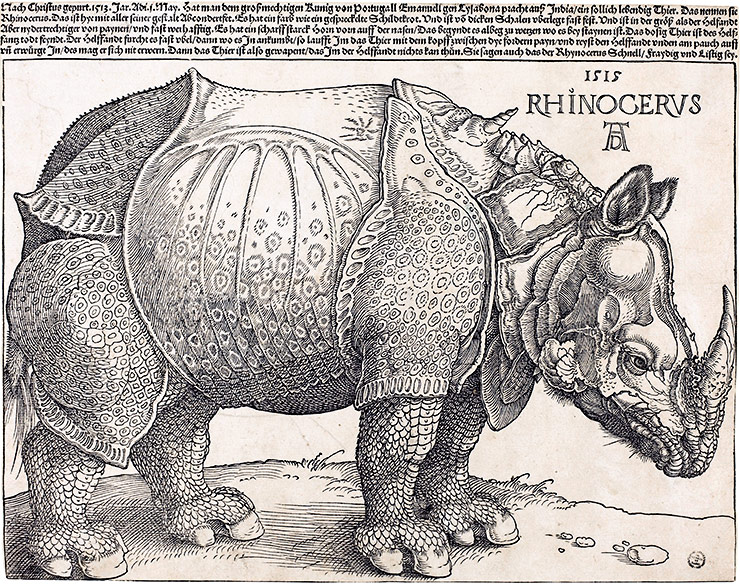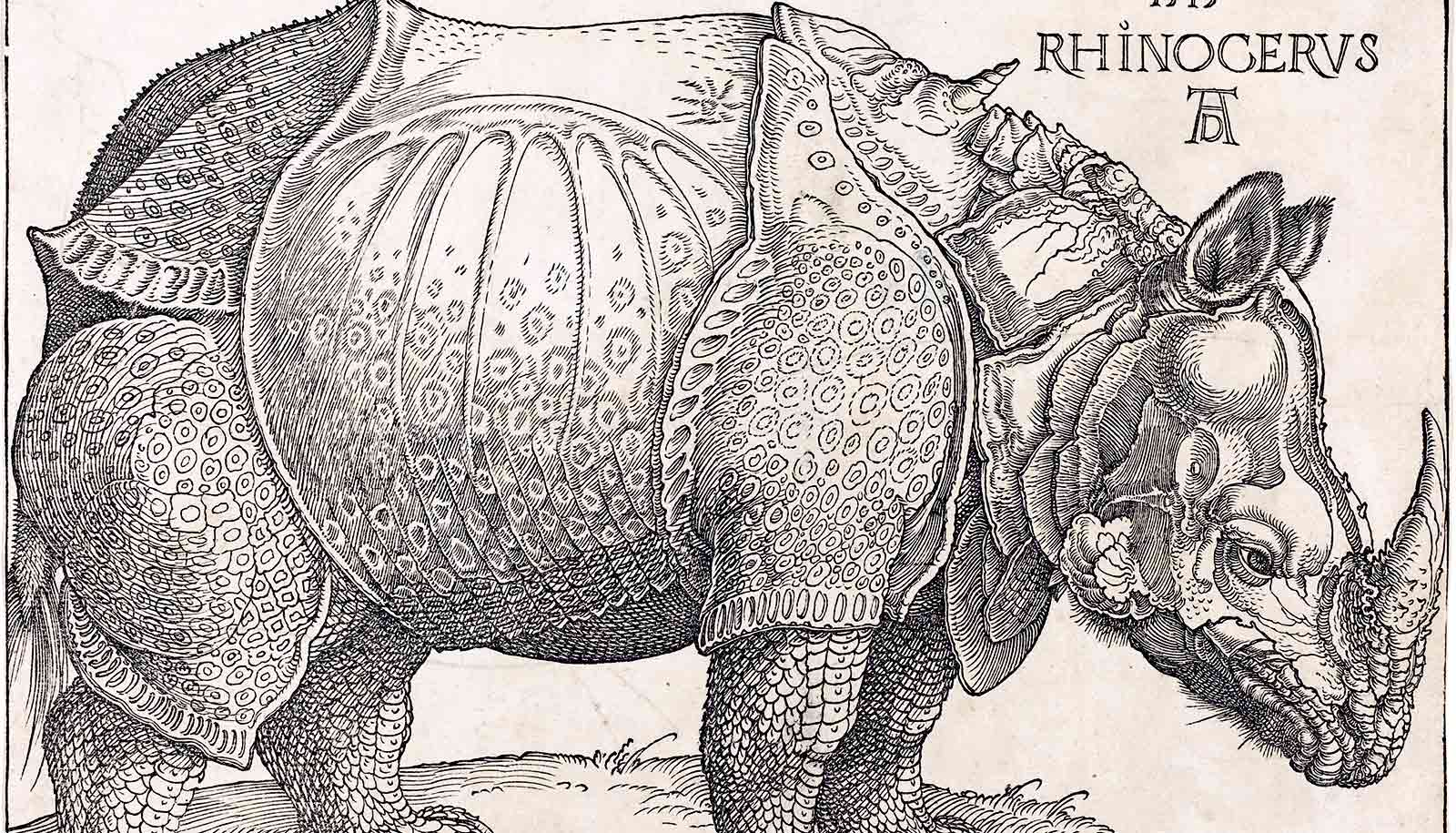The tale of one of the most infamous gifts of all time—Ganda the rhino, a gift to Pope Leo X that drowned in 1515—lives on in one of the most influential images in art history and is also the focus of a new book coming out this spring.
“Ganda the rhino, was sent by Sultan Muzaffar Shah II of Cambay to King Manuel I of Portugal as a diplomatic gift,” says Giorgio Riello, the book’s author a professor in the history department at the University of Warwick.
“As soon as it arrived people flocked to the main square in Lisbon to see Ganda,” the first rhino in Europe since Roman times and the latest addition to the king’s menagerie, Riello says.

The Roman historian Pliny had written in the 1st Century AD that rhinos and elephants were bitter enemies, with it written in texts that “rhinos could win over elephants,” adds Riello.
King Manuel decided to test the ancient theory by pitting an elephant from his collection against Ganda—but the elephant fled just as the fight was set to commence, confirming Ganda’s status as a special creature. Despite Ganda’s triumph, “Manuel eventually got bored with the rhino and decided to send it to the pope” and added it to the collection of animals he had already sent to the Vatican, Riello explains.
Unfortunately for Ganda, the journey to Rome from Portugal was not as successful as the journey from Cambay. Shackled to the ship during the journey, Ganda was unable to escape as the vessel was wrecked in a sudden storm off the northern coast of Italy.
Ganda’s fame would last longer than his journey, though, says Riello.
“The memory of the rhino lives on thanks to a print by the artist Albrecht Dürer, and so this rhino remains the most famous European animal of the renaissance.”
How Scrooge and Tiny Tim still shape Christmas
Dürer’s 1515 image of Ganda, based solely on the descriptions found in letters sent by merchants from Portugal and known as The Rhinoceros, would go on to become one of the most famous images of any creature in art history—going on to be reproduced through the centuries that followed, turned into statues and ceramics, as well as inspiring Salvador Dali, who kept a copy of Dürer’s Rhinoceros in his home.
Source: University of Warwick



